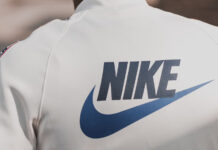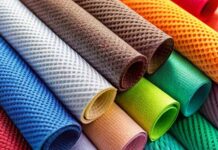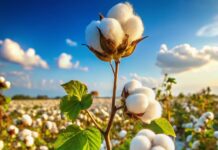The U.S. market for HS-560394 nonwovens (>150 G/M²) is highly competitive, with China holding a dominant position in volume while Japan excels in premium segments. Recent tariff increases have threatened China’s pricing advantage, potentially giving Mexico a temporary benefit. However, upcoming tariffs on Mexico could shift market shares, creating opportunities for Japan, Germany, and South Korea to strengthen their presence in the market.
As these countries vie for increased market share in the U.S., understanding the intricacies of trade values, revealed comparative advantage (RCA), unit value realization (UVR), and tariff structures is essential. This analysis examines the export performances of these nations and evaluates the implications of tariff adjustments and shifting trade dynamics on their competitive standing in the U.S. market.
Trade Review
China
China remains the dominant force in the export market for nonwoven textiles, with total exports valued at $46.97 million. Its RCA of 8.29 underscores a robust competitive position, indicative of specialization and efficiency in production. The UVR of $3.90 per kilogram highlights a manufacturing strategy focused on high-volume, cost-effective outputs, enabling China to maintain price competitiveness in the U.S. market. Additionally, a 0% tariff rate further enhances China’s export potential, facilitating smooth trade flows and solidifying its leadership in this sector.
However, the introduction of tariffs on February 4, 2025, imposed a 10% tariff rate on Chinese exports, which is expected to exert upward pressure on the UVR. As production and export costs rise, the UVR may increase to approximately $4.29/kg, reflecting the heightened challenges posed by these tariffs. The subsequent tariff imposition on March 4, 2025, which raised the rate to 20%, could push the UVR even higher, potentially exceeding $4.68/kg. This tariff escalation is likely to diminish China’s cost-effectiveness, allowing Mexico to emerge as a more formidable competitor, contingent upon the potential tariffs from the U.S. government after April 2, 2025.
Japan
Japan ranks second in terms of export value, recording $45.77 million, while boasting the highest RCA of 24.57. This figure indicates Japan’s highly specialized and competitive position within the nonwoven textile sector. The UVR of $33.07/kg is significantly higher than that of its competitors, demonstrating a strong emphasis on premium-quality, high-performance products. Japan’s exports primarily cater to niche markets, including healthcare, advanced filtration, and high-tech applications. The prevailing 0% tariff rate supports its global trade position, ensuring seamless access to markets for its high-value nonwoven textiles.
Germany
Germany’s advanced textile technology contributes to its export value of $35.33 million and an RCA of 17.63, reflecting competitiveness in high-quality nonwoven textiles. The UVR of $7.60/kg is notably lower than Japan’s but higher than China’s, indicating a balanced approach that emphasizes both quality and cost-efficiency. Germany targets diverse industrial applications by offering technologically advanced yet competitively priced nonwovens. The 0% tariff rate further enhances its export capacity, reinforcing its position in global markets.
Mexico
With an export value of $30.39 million, Mexico capitalizes on its proximity to the U.S. market, offering logistical advantages and trade efficiencies. Despite having the lowest RCA among the top exporters at 4.87, indicating moderate competitiveness in the nonwoven textiles sector, Mexico maintains a strategic role. The UVR of $4.50/kg, slightly higher than China’s, signifies a focus on value-added products rather than purely cost-driven outputs. The current 0% tariff rate bolsters Mexico’s export potential, solidifying its position as a significant supplier to North American markets. However, this dynamic may be impacted after April 2, 2025, depending on new tariffs imposed by the U.S. or changes to the USMCA agreement.
South Korea
South Korea ranks fifth with an export value of $26.49 million and maintains a strong competitive position, reflected in its RCA of 15.96. The UVR of $8.87/kg is higher than both Germany’s and China’s, indicating a focus on mid- to high-end product offerings. This strategy suggests that South Korea prioritizes quality and innovation in its nonwoven textile exports. The 0% tariff rate further enhances its accessibility to markets, supporting its role as a key player in the global nonwoven textiles trade.
Competitive Landscape and Outlook
Tariff-Free Market
All five countries have been benefiting from a 0% tariff rate, fostering an open trade environment for nonwoven exports. However, China’s recent imposition of a 20% tariff significantly alters the competitive landscape. While China dominates the market in terms of volume, competitors such as Japan, Germany, Mexico, and South Korea are positioning themselves strategically on price and specialization.
Diverse Market Strategies
Mexico focuses on cost-efficient production, while Japan leads with premium-priced, high-value nonwovens. In contrast, Germany and South Korea strike a balance between quality and cost-effectiveness, enabling them to cater to a broad range of industrial applications.
Conclusion
The global nonwoven textile market for HS-560394 is currently led by China in terms of volume. However, the U.S. tariff impositions are poised to weaken China’s competitive pricing advantage. In this context, Mexico is likely to benefit from the heightened tariffs on China, although this advantage may diminish after April 2, 2025, as new tariffs may be introduced. The changing dynamics of trade are expected to favor Japan, Germany, and South Korea, who can leverage these conditions to strengthen their market positions in the nonwoven textiles sector. As brands navigate these complexities, adaptability and strategic sourcing will be essential for success in this evolving landscape.






























